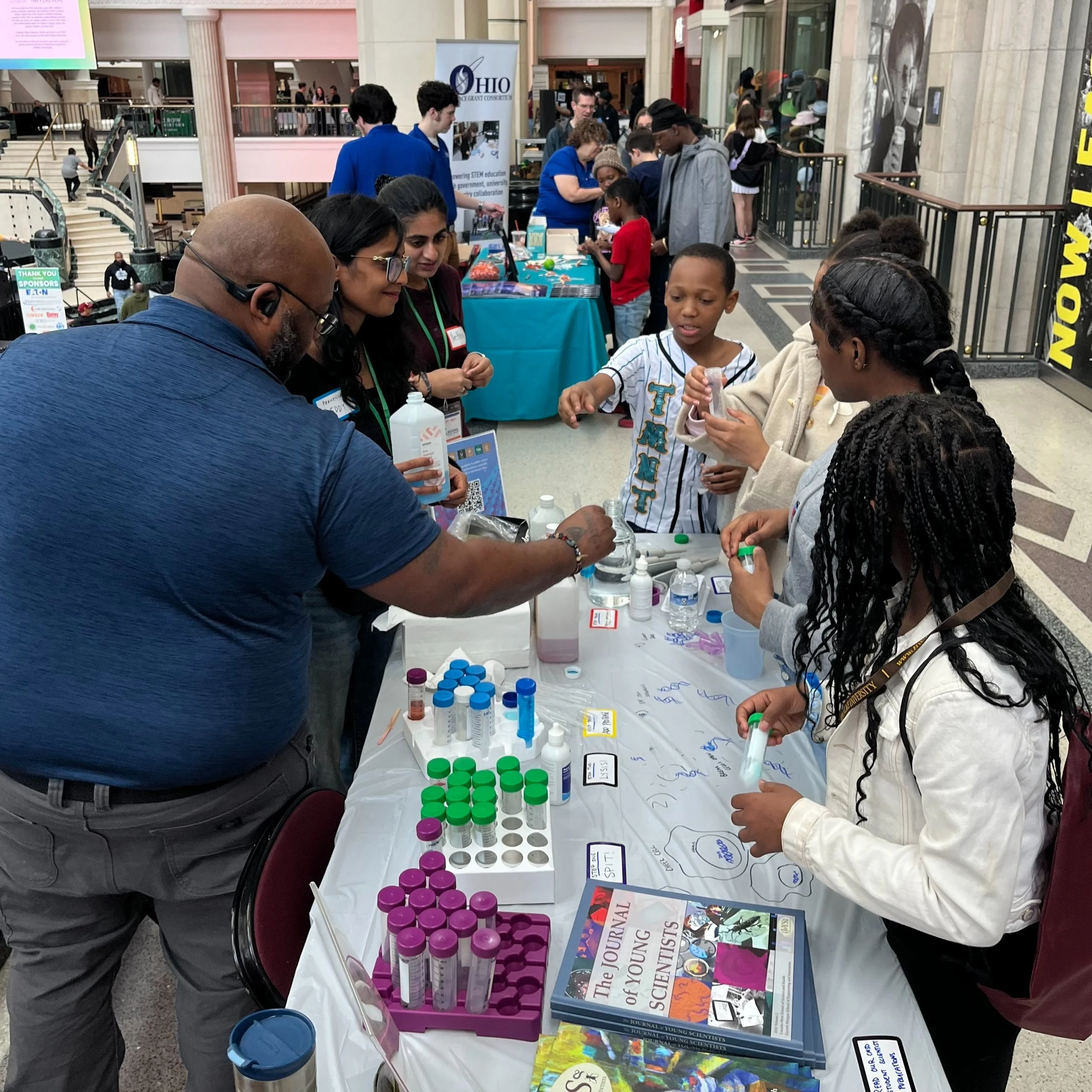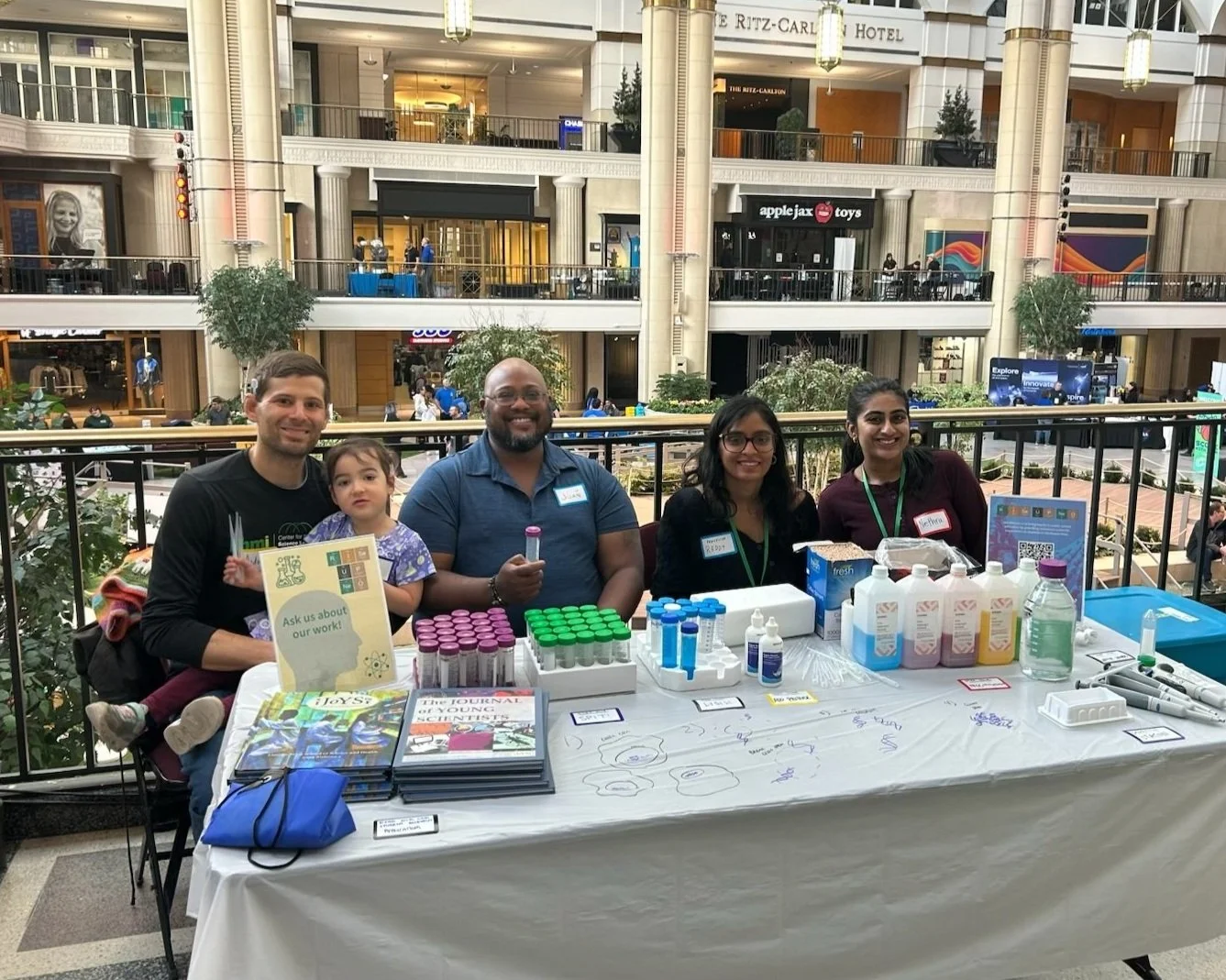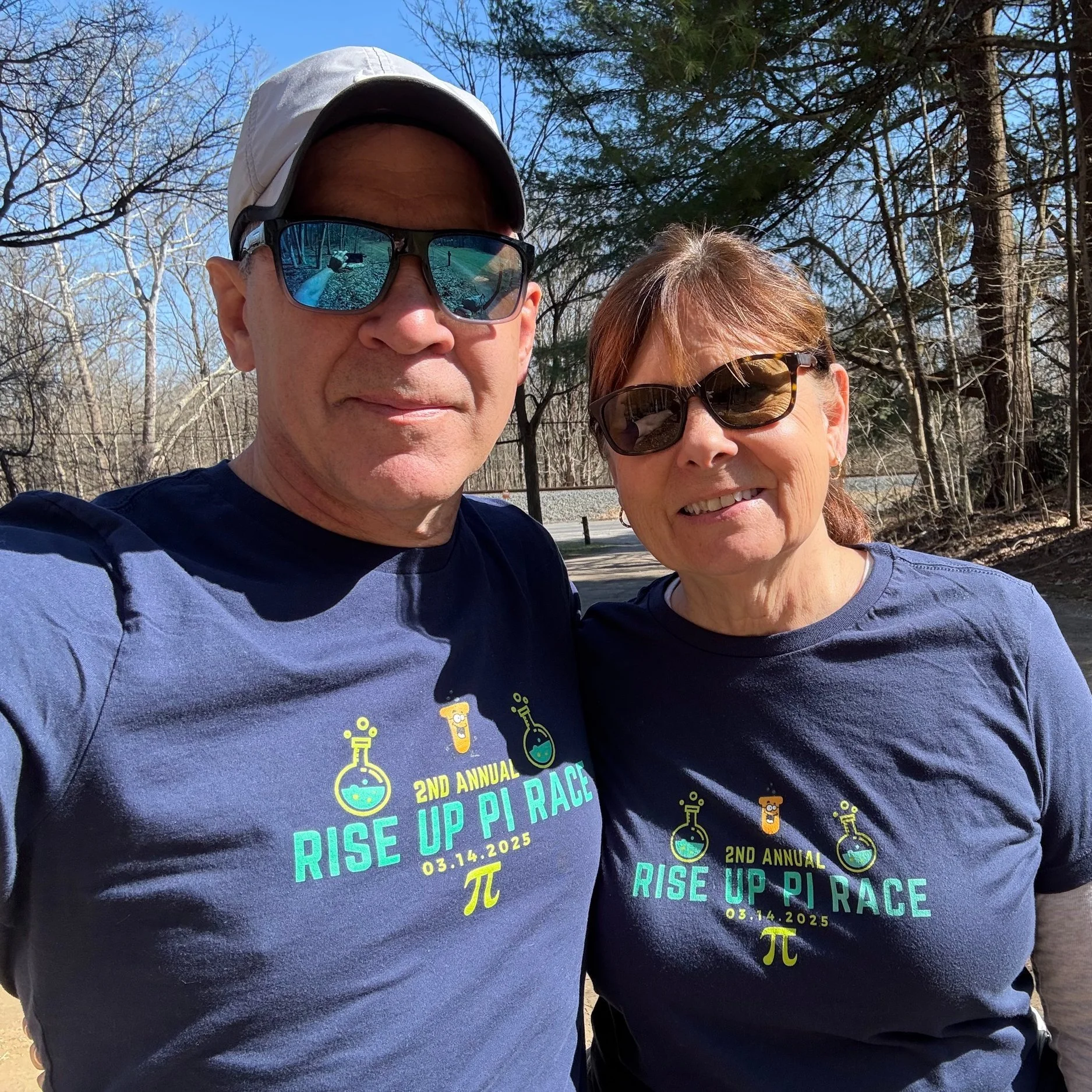March 2025
DNA isolation at Tower City!
Score with STEM
On Sunday, March 16, Tower City Center welcomed over 1,500 students and their families for the Score With STEM event hosted by NEO:STEM, a partnership with the Cleveland Cavaliers that blended interactive STEM learning with a fun afternoon of NBA basketball! The event provided a unique opportunity for students to engage with science in a fun, hands-on environment. There were dozens of groups participating that included government entities like NASA, businesses like Sherwin-Williams, local universities, and other nonprofits like Ingenuity and Rise Up!
At Rise Up’s DNA Extraction Station, students explored the science of genetics by extracting their own DNA with the help of our scientist volunteers and using simple household materials. This activity gave them a firsthand look at DNA—the blueprint of life—inspiring scientific curiosity. It was great to see so many students and families excited to learn, ask questions, and participate in real scientific exploration.
We appreciate everyone who stopped by our station and took part in this experience. We look forward to continuing to bring engaging STEM opportunities to the community! Thank you to our amazing volunteers: Lillo, Juan, Reddy, and Nethra!
Andrew, Lillo, Juan, Reddy and Nethra
Garrett Morgan update
We had an amazing March working with students at Garrett Morgan! These research groups have been working hands-on for about 2 months and they are making great progress. Today we will highlight research group #35 Regeneration.
Imagine a world where wounds heal faster, where medical treatments could enhance recovery, and where scientists unlock nature’s best-kept secrets to advance medicine. That’s exactly what this research project aims to explore!
In this study, students investigate whether different treatments can enhance wound healing and tissue regeneration. By using blackworms and Arabidopsis plants as model organisms, they can analyze how various substances impact the speed and success of regeneration. The findings could have far-reaching implications for medicine, agriculture, and even environmental sciences.
What are they testing?
Students are comparing the effects of four different treatments on wound healing:
Fibroblast Growth Factor (FGF2): A protein that promotes cell growth and tissue repair in humans
Neosporin: A common antibacterial ointment used to prevent infection
Aloe Vera: A natural extract known for its skin-soothing and healing properties
Clorox: A cleaning agent frequently found in our environments that may impact healing in unexpected ways
Control Group: No treatment, to serve as a baseline for comparison
Testing regeneration in blackworms
Blackworms have an incredible ability to regenerate lost body parts, making them an ideal subject for studying wound healing. In this experiment, students carefully cut the worms into equal segments and observe how quickly they regrow in different treatment environments.
Over several weeks, students track survival rates in each treatment group, regrowth speed of missing body parts, and changes in movement and behavior under each condition. By the end of the study, they will create graphs and visual data to compare which treatments accelerated or slowed regeneration for their manuscript submission to the Journal of Young Scientists.
Investigating healing in plants
Arabidopsis, a small flowering plant widely used in research, also has regenerative properties. In this experiment, students remove a leaf and cut part of a branch to test how different treatments affect plant healing.
Throughout the study, they document the speed of regrowth at injury sites, scarring or abnormal tissue formation, and the color or structural changes in nearby leaves and branches.
To further analyze the biological response, they will measure levels of Cyclin B1-1, a protein linked to cell division. If a treatment boosts regeneration, we should see higher levels of this protein in the affected areas.
Why this research matters
This study could pave the way for better medical treatments for wounds and injuries. If substances like FGF2 or Aloe Vera significantly improve healing, they could inspire new therapies for human wounds, burns, and even surgical recovery. Beyond medicine, these findings could also impact agriculture and environmental science by helping plants recover from damage more effectively.
What’s next?
As students continue collecting data, they will analyze trends and compare results across both experiments. Could a simple household ingredient like Aloe Vera prove just as effective as lab-designed growth factors? Could Clorox unexpectedly harm or enhance regeneration?
Stay tuned for the results and make sure you continue to follow this exciting research!
Students working with blackworms in the Regeneration project
Lincoln-West updates
Students at Lincoln-West School of Science and Health are currently on their three week spring break. Lincoln-West is a year-round school so they have a few extended breaks in their school calendar. This means we only had two weeks to work with students in March, however, they are making extraordinary progress and should be ready to begin the molecular testing phase of their experiments. Here are some of the techniques we use:
1. Western Blot
Western Blot is a laboratory method used to detect specific proteins in a sample. How it works: The sample is first separated based on the size of proteins using a gel. The proteins are then transferred onto a membrane, and specific antibodies are added. These antibodies bind to the protein of interest, and special chemicals are used to make the bound protein visible. Why: It helps confirm the presence of a protein, and is often used to check for certain proteins linked to diseases or conditions.
2. Protein and Lipid Assays
Protein and lipid assays are techniques used to measure the amount and properties of proteins and fats (lipids) in a sample. How it works: Various methods, such as color-changing chemical reactions (colorimetric assays) or advanced tools like mass spectrometry, are used to measure the concentration and structure of these molecules. Why: Understanding the levels and behavior of proteins and lipids is important for studying how cells and organs function, and can provide insight into disease states, metabolism, or drug effects.
3. Polymerase Chain Reaction (PCR)
Polymerase Chain Reaction (PCR) is a powerful technique used to make millions of copies of a specific piece of DNA. How it works: A sample containing DNA is mixed with special chemicals and enzymes. The DNA is heated to separate it into strands, then cooled to allow short DNA sequences (primers) to attach. The enzyme polymerase extends these primers, creating copies of the target DNA sequence. The process is repeated many times, resulting in millions of copies of the specific DNA sequence. Why: PCR is used to study small amounts of DNA in detail, helping diagnose infections, identify genetic conditions, and analyze genetic material in research.
4. DNA Electrophoresis
DNA electrophoresis is a technique used to separate DNA fragments by their size. How it works: DNA samples are loaded into a gel, and an electric current is applied. Since DNA has a negative charge, it moves through the gel towards the positive end. Smaller DNA fragments move faster through the gel, while larger ones move more slowly. Why: This method is used to separate and measure the size of DNA pieces. It helps scientists analyze DNA, confirm the results of PCR, and identify specific genes or mutations.
5. SDS-PAGE
Sodium Dodecyl Sulfate-Polyacrylamide Gel Electrophoresis is a technique used to separate proteins based on their size. How it works: Proteins are mixed with a detergent (SDS), which gives them a negative charge and denatures them, meaning they lose their natural structure. The proteins are then loaded into a gel, and an electric current is applied. Since all proteins are now negatively charged, they move through the gel with smaller proteins moving faster than larger ones. Why: SDS-PAGE is used to determine the size of proteins, check their purity, and study their structure. It’s an essential tool in protein research and quality control.
Rise Up volunteer Tae Hun Kim examining bacteria growth with a student
2025 Pi Race
We would like to extend a heartfelt thank you to everyone who took part in the 2025 Pi Race! Whether you ran, walked, or donated, your support helped make this annual event a success.
Your generosity and enthusiasm directly contribute to Rise Up: Northeast Ohio’s mission, helping us continue our work in the communities we love. We’re grateful for your involvement and look forward to another race in 2026!
You can mark your calendars now for March 14th, 2026!
2025 Pi Race




